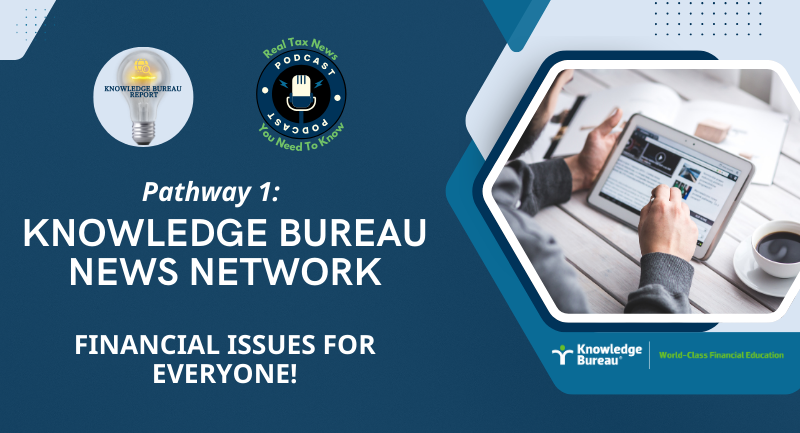Last updated: May 22 2025
At a Crossroads? The Self Employed in Canada

Geoff Currier & Evelyn Jacks
The tax filing profile for the self employed is coming up fast: June 16,2025. These proprietors file T1 returns and report net income, which is subject to tax and also Canada Pension Plan (CPP) contributions upon filing. There can also be losses which offset other income of the year. Regardless, their tax and financial planning needs are unique, especially because they are at greater risk of audit by CRA and also of having too many eggs in one basket. . .their business.
The Big Picture: In 2023, an average of 2,652,600 Canadians were self-employed. You may be one of them. People in accounting, tax preparation, bookkeeping and payroll services account for 64,700 of the above.
Government figures tell us that approximately 13.2% of employed Canadians work for themselves. In the 1990’s that figure was significantly higher, reaching a high of 17.2%. Almost 70% of self-employed Canadians are male.
If you are not among the self-employed, you likely have clients who are and it’s important to keep them educated on all of the tax implications that come with working solo. There are many ways to help, particularly a newcomer or someone who is changing careers as a result of a life event, like unemployment. One would think that It all begins with proper documentation, but there is a step before this.
Setting up the digital relationship with the CRA. It is now mandatory to communicate with CRA digitally. Setting up MyAccount and MyBusiness Account is a mystery to most people and can be very time consuming and frustrating as well. This is an important first service a professional tax preparer, accountant or bookkeeper can offer. This involves having the right computer equipment – including receipt scanners and digital filing skills. Advisors who take their business clients through a tutorial provide an excellent, high value service.
Good Records Can Help Avoid Audits: After this, accurate record keeping is at the top of the list of priorities for the self employed. Because of the nature of self employment, your clients will need to be aware that CRA may audit their returns. Honesty and accuracy are critical when it comes to dealing with CRA. False or inaccurate returns can cost your clients dearly in penalties and interest charges.
of self employment, your clients will need to be aware that CRA may audit their returns. Honesty and accuracy are critical when it comes to dealing with CRA. False or inaccurate returns can cost your clients dearly in penalties and interest charges.
Some of your clients may not make a full time living from their self employment, but it is still essential that they maintain accurate records of income and expenses. This is especially important if there are mixed use expenditures such as use of a car for personal and business use and home workspace expenses.
Tax Benefits: There are several tax advantages to being self-employed. For example, the self employed person may transfer personal assets to their new business. If operating a sole proprietorship, obtain the fair market value (FMV) of the asset and record the cost base. If this value is greater or less than than the original purchase price, a capital gain or loss may be reportable.
If working from home, there are tax write offs too, based on the square footage used in the home workspace. Costs, such as utilities and property taxes or mortgage interest may be deductible. Never assume your clients know about these write offs. There are also special rules for hiring family members in the business. These should be articulated in a checklist so that clients can start to keep records.
Software Helps but is Not a Panacea. Even if software is used to do this, don’t assume clients understand the difference between a balance sheet account entry and one that goes to the profit and loss statement. At tax filing time the recording of accounts receivable and payable can also be problematic. Be sure to help with an educational session and a follow up to get the digitization of the bookkeeping onside properly before tax season. A common miss: those earning more than $30,000 a year will need to apply for a GST/HST number. This is something a newcomer to self employment may not know and it’s just one example of the many pieces of tax information you will need to supply to your clients. This can be a starting point for audit activity.
There are some activities that are prone to “under the table” activity. As you can see from the following table from Statistics Canada, people in the building and construction industries make up a large portion of the self-employed, and unfortunately this is a red flag for audits. It should be impressed upon them that this may not end well: penalties for gross negligence (50% of tax owing) or tax evasion (200% of tax owing and/or jail) are severe consequences.
It is noteworthy that the market for tax accounting, bookkeeping and payroll businesses is 64,700 in Canada.
|
Participation Rate |
|
|
Residential building construction |
148,900 |
|
Services to buildings and dwellings |
123,000 |
|
Computer systems design and related services |
101,600 |
|
Personal care services |
99,200 |
|
Offices of real estate agents and brokers |
93,400 |
|
Offices of other health practitioners |
89,800 |
|
Offices of physicians |
85,100 |
|
Building finishing contractors |
84,100 |
|
Other schools and instruction |
77,300 |
|
General freight trucking |
71,400 |
|
Building equipment contractors |
71,000 |
|
Management, scientific and technical consulting services |
68,200 |
|
Accounting, tax preparation, bookkeeping and payroll services |
64,700 |
|
Independent artists, writers and performers |
63,400 |
|
Full-service restaurants and limited-service eating places |
54,200 |
|
Notes: Self-employed workers aged 15 and over. Excludes population living in the territories, on Indigenous reserves and in institutional settings, as well as full-time members of the armed forces. |
|
The Bottom Line: Your self-employed clients are working for themselves most likely because they want the autonomy and control of their lives, enjoy working at something about which they are passionate. In some cases they may be able to earn more money than if they were salaried. There are some who have turned to self-employment because they’ve been unable to find a salaried position or have lost their jobs. But they make up only a small percentage of the overall self-employed population.
If your clients are self-employed, they must understand the tax implications and this is where you become an educator. This is especially true for clients in their first year of self-employment. There is much to learn and as a tax professional your advice and guidance are invaluable.
Stay tuned weekly to Knowledge Bureau Report for continuing coverage of breaking tax and economic news and tune in to a new podcast- Real Tax News You Can Use with Evelyn Jacks: podcast@knowledgebureaureport.com
